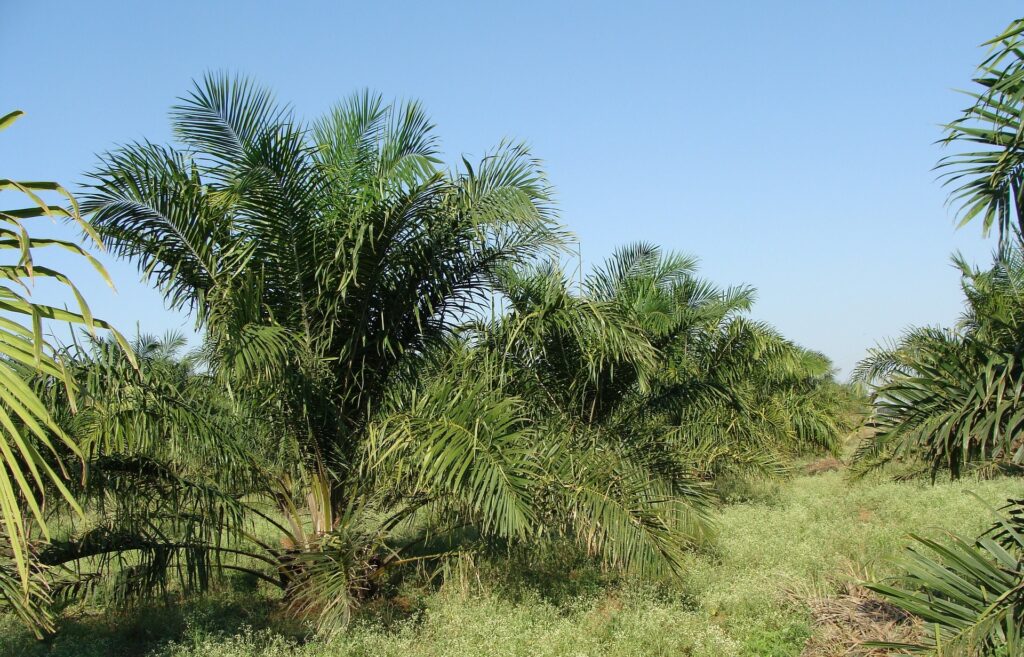
Despite the growing popularity of regenerative agricultural methods, regenerative agriculture to produce palm oil remains a relatively new frontier, as palm oil is famously one of the most environmentally-unfriendly crops. The usefulness of regenerative agriculture in this sphere’s environmental and economic benefits is still being debated. The question is: can these methods work at scale? Here’s everything you need to know about how different organizations plan to apply regenerative agriculture in the palm oil industry, and the challenges in reaching this goal:
- Sustainable farming foundation ReNature is working with Wild Asia to implement a regenerative agricultural project on a 100-hectare land plot of palm oil in Malaysia. (more…)
- An ongoing regenerative agricultural project called SAF- Dendê is growing oil palm in mixed-use forest systems. (more…)
- There are several challenges in expanding these regenerative agricultural methods on a larger scale. (more…)
Background Information: What is Regenerative Agriculture?
Full Report: Can Regenerative Agriculture Transform Palm Oil?
Recent Regenerative Agriculture Project for Oil Palms
The Dutch foundation reNature and Malaysian NGO Wild Asia are collaborating to establish a project that will use 100-hectare farmland of palm oil in Malaysia for regenerative agriculture. Here’s all you need to know about the proposed project:
- In the project, farmers will plant the oil palms with other crops, this is a regenerative agricultural practice sometimes referred to as cover crops that helps increase crop and soil health. They will also avoid using chemical fertilizers and start weeding by hand, rather than by destructive machine. These practices are intended to achieve the two main goals of the project: improving soil health and increasing the area’s biodiversity.
- The project will use the regenerative agriculture process that involves planting commercial crops along with native vegetation and covering the soil with organic matter. This method is carried out through two different techniques: intercropping and cover-cropping.
- This method will not only reduce the need for chemical fertilizers, but it can also diversify crops which will increase crop yields and earnings for the farmers. It can help in improving soil health and increase biodiversity. It can also help prevent diseases and pests from taking hold, as increased plant diversity creates a more pest-resilient forest. A study also revealed that regenerative farming can produce more nutritious food.
An Ongoing Regenerative Agriculture Project for Oil Palms
In 2008, a research project was carried out in Brazil to study the feasibility of growing oil palm in mixed-use forest systems. The project, called SAF Dendê, involves various stakeholder groups such as the World Agroforestry Centre, Natura, Tomé-Açú Agricultural Cooperative, and the Brazilian Agricultural Research Corporation.
- The project helped 18 small-scale farms in the Brazilian Amazon transform their lands into productive regenerative farmlands. They have reduced the use of pesticides and fertilizers, and they have planted oil palms interspersed with hardwood trees, passion fruits, and açai, which can also be sold for a profit.
- Through ongoing studies, researchers have learned that the biodiversity such as macro-fauna and birdlife in the experimental plots is often significantly higher than those found in conventional farms. These systems can also hold more carbon in the soil, which helps to fight climate change.
- The project proved that contrary to popular belief, sustainable and regenerative agricultural farming methods didn’t have a negative economic cost, as they were able to produce more fruit per tree than traditional methods. This method also provides farmers with more flexibility and adaptive management.
Challenges Of Expanding Regenerative Agriculture On A Larger Scale
Although the study showed that diversifying the crops in oil palm plantations could free up land for other uses, more studies are needed to see how these regenerative agriculture initiatives would play out on a large scale. Here are some of the challenges to expanding the regenerative agricultural methods to larger areas and farms:
- According to research conducted by the World Agroforestry Centre, regenerative agriculture tends to produce higher yields for each palm tree, but not per area of land. The concern is that because regenerative methods result in fewer palm trees per hectare, due to growing other crops in between, the methods could result in expanding the size of palm oil plantations. In other words, regenerative methods like cover-cropping require more land to produce the same number of palm trees, even if each palm has a higher yield.
- The regenerative agricultural methods for palm oil farming have only been tested on small-scale oil palm farms, which cover 40% of global palm oil production. However, 60% comes from the industrial monocrops of oil palms, and the effects of the regenerative agricultural method’s expansion to these massive oil palm plantations are still unclear and may need more studies.
- Despite the various potential benefits of regenerative agriculture, many small-scale farmers are still not convinced to adopt these methods.
- Massive industrialized palm oil plantation owners will be even more hesitant to switch to regenerative agricultural methods. This is due to the fact that they are already earning big from farming just oil palm on a large scale. Implementing a regenerative strategy to their plantations, such as agroforestry, might seem to be an extra effort and inconvenient.
Sources:
“Can Regenerative Agriculture Transform Palm Oil?” China Dialogue, March 22, 2022.